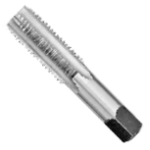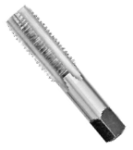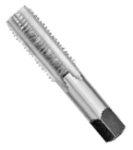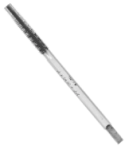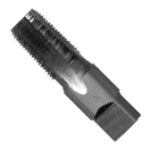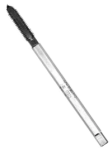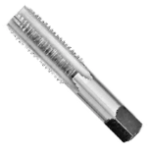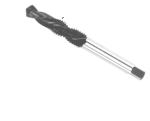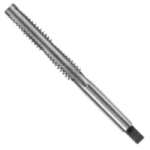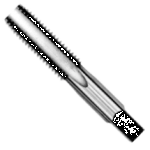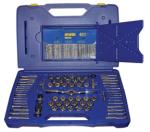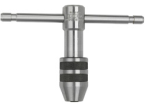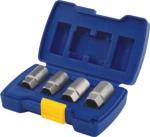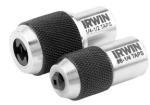Threading Taps |
The taper tap can be identified by the visible and pronounced tapering of the cutting edges. This provides a very gradual and less aggressive cutting action. The distinct feature of a taper tap is the 8 to 10 threads that taper from the tip to the full cutting force diameter. A taper tap is most often used as a starter tap for difficult blind holes. The gentle taper of the cutting edge is the most forgiving when tapping by hand and allows for a straight hole to be cut in especially hard materials.A taper tap is rarely the final tap used before completing a project however, as the taper leaves incomplete threads cut at the bottom of a blind hole. A plug tap has a less pronounced taper to the cutting edges. This gives the plug tap a gradual cutting action that is less aggressive than that of the bottoming tap but more aggressive than a taper tap. Typically, the plug tap will have 3 to 5 tapered threads before the full cutting diameter is engaged. Plug taps are great when used with through-holes, as they are almost as easy as taper taps to start, but also offer a more complete set of threads. The third style is a bottoming tap. Bottoming taps have 1 to 2 tapered cutting edges before the full cutting force is engaged. Though this tap is extremely hard to start threads with, it is capable of cutting threads all of the way to the bottom of a blind hole. Bottoming taps are best used after a taper or plug tap has been used to cut the initial thread. |
Can't find the fastener or product you are looking for or need more information about our 'Threading Taps'? Call us today or click the quote button.
Click here to view all of our Diamond Vantage Specials

|

|

|







